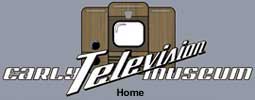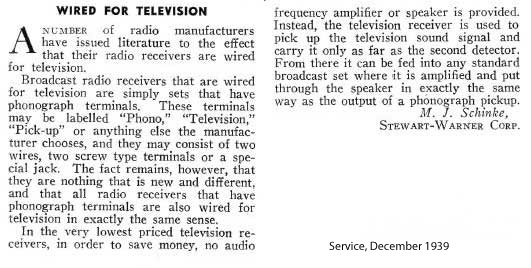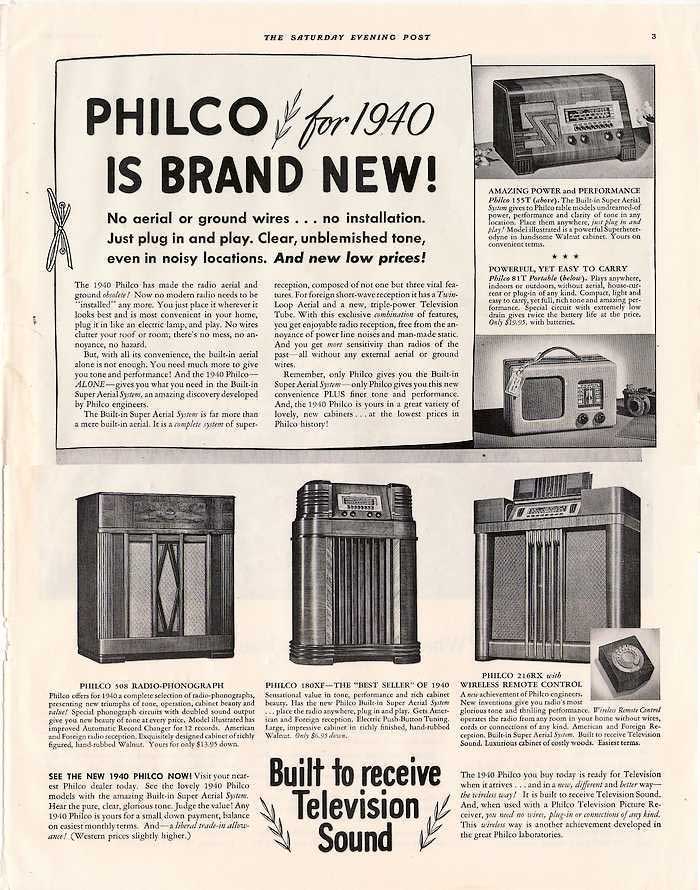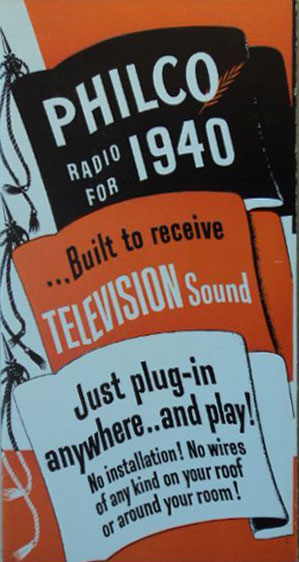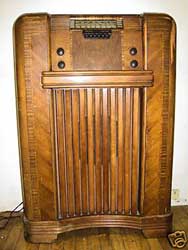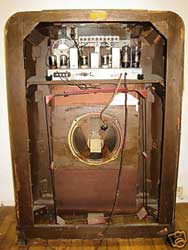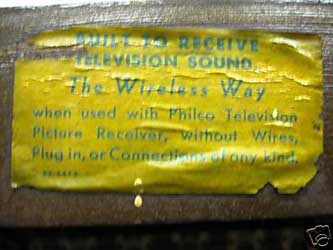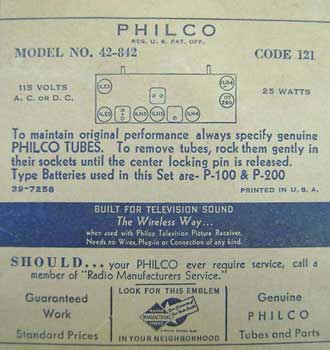Early Electronic Television Using a Radio for TV SoundSome of the low end early electronic TV sets, such as the RCA TT-5, Westinghouse WRT-700, and GE HM-171 required an audio amplifier for sound. This was done to reduce the cost of the set. A connection was provided on the rear of the set to connect them to 1939 and 1940 model radios. Another advantage of this was that these manufacturers could advertise that their radios were "ready for television", a feature that would make them more desirable than their competitor's sets without the feature.
Service, December 1939 Another approach was the use of wireless connection of the TV set to a radio. The first to do this was RCA, with its prototype 5 inch set, the RR-366. This set amplified its 8.75 mHz audio IF frequency and broadcast it. Here is an article by Jeff Lendaro about this subject. In 1940, Philco introduced a 7 inch table model set which used a similar approach. Many 1940 model Philco, Silvertone, and perhaps other radios had their shortwave dials marked "TV Sound" at 8.25 mHz. The system is described at the bottom right of this advertisement:
1941 Philco radio designed for wireless TV sound. The label in the picture on the right is visible at the top of the cabinet in the picture in the center.
This set tunes only the AM radio band, yet it has a label saying that it can be used to receive television sound. It is unclear how this was possible. |
